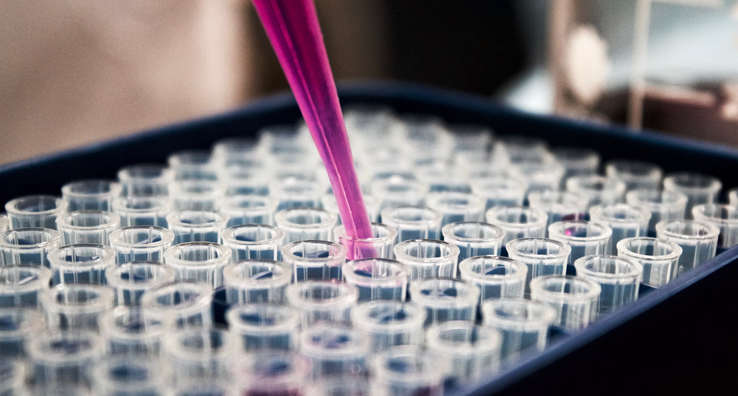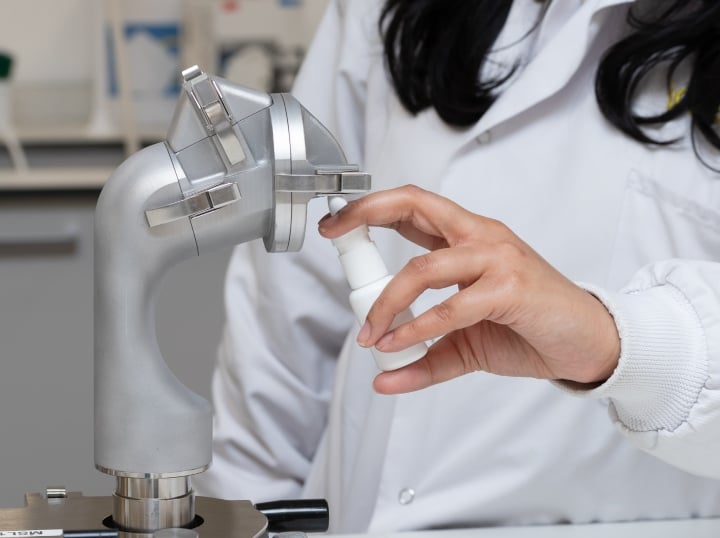Attending DDL 2025 - The Drug Delivery to the Lungs Conference? Discuss your respiratory drug delivery challenges for all categories of inhaled or intranasal products.
We are excited to be DDL2025 Platinum Sponsors again at this International Conference. Discuss your respiratory drug delivery challenges for all categories of inhaled or nasal products, including dry powder formulations and devices, nebulized solutions/suspensions, metered dose inhaler products and a range of novel respiratory delivery systems.
DDL 2024 (December) CONFERENCE POSTER:
The Evaluation of Equivalence of Mometasone Furoate Nasal Sprays via an In-Vitro Pathway using Dissolution, MDRS and Laser Diffraction techniques
In May 2023, the FDA updated the Fluticasone Propionate, Mometasone Furoate and Fluticasone Furoate nasal suspensions FDA bioequivalence guidelines to include dissolution testing as an in-vitro Bioequivalence (IVBE) requirement. This update has given generic companies the opportunity to understand better the product being formulated by detecting meaningful differences between the candidate Test and Reference product formulations. The differences between the products may be minor however the knowledge gained from the dissolution testing can be further expanded on by using other orthogonal techniques, such as Morphology Directed Raman Spectroscopy (MDRS) and Particle Size Distribution (PSD) by Laser Diffraction. These additional tests can give insights into the reasons for differences seen in the dissolution data by assessing the particle size within the bulk product formulation, whilst also giving API specific size and shape information, which are critical variables that will affect dissolution (and as a result for these products, the pharmacokinetic profile observed). This design of the experimental approach is not limited to nasal sprays and can also be used to aid in de-formulation, early screening and assessment of other OINDP delivery platforms.
In this study, the dissolution profiles of two commercially available Mometasone Furoate nasal sprays, which have already been proven to be bioequivalent, were appraised, and differences between these two products were further assessed using MDRS and Laser diffraction to investigate and determine the reasons behind any differences seen.
Authors: Lily Richards, Darren Long, Mervin Ramjeeawon, Hannah Stafford & Yuen Ting Wong, Intertek, Saxon Way, Melbourn, Herts, SG8 6DN, UK
Download your copy now:
ARRANGE A MEETING
Our team of experts will be available at our booth to discuss how we support development projects for both small and large molecules across all respiratory delivery technology platforms. Get in touch now to arrange a meeting.
Key themes for DDL2025 discussions include:
- Formulation development - including particle engineering approaches
- Specialist support for biologics and DNA based medicines with a dedicated suite for testing and characterisation
- Independent device screening and selection
- Clinical manufacturing
- CMC package support
- ICH stability study testing and program management
- QC and GMP Batch Release testing
- In-vitro bioequivalence (IV-BE) studies including
GMP IV-IVC tools; MDRS, Inhaled Dissolution, Idealised inlet models and realistic breathing profiles for impaction testing
RESOURCES
Find out about our DDL 2023 Presentation:
Reducing Time Requirements for Morphologically Directed Raman Spectroscopy Based In Vitro Bioequivalence Studies via Advanced Optimisation of Analysis Methods
IVBE studies have formed part of increasing numbers of abbreviated new drug applications (ANDAs) for generic nasal drug products (OINDPs) over the past decade. Morphologically directed Raman spectroscopy (MDRS) can selectively measure the particle size and morphology of separate species within multi-component blends and suspensions, enabling the characterization of the size of a drug particle, and infer the dissolution characteristics to a level where clinical endpoint studies may be entirely bypassed when demonstrating bioequivalence for certain products. MDRS measurements, however, can take many hours and so the approach can be limiting considering a typical full IVBE study may involve a minimum of 60 replicates.
In his presentation our expert, Ben Stafford, describes how optimisation of the MDRS approach using a highly API-selective microscopy-only analysis can confidently measure comparative particle size distributions without full Raman ID for every replicate. This could allow for a reduction in the time and financial requirements when conducting future IVBE studies for generic nasal drug products.
Speaker: Ben Stafford, Scientist, Intertek Melbourn.
Request a copy here
- BROCHURE: Our Orally Inhaled and Nasal Drug Product Development Expertise
- BROCHURE: Inhaled or Intranasal Biologic Drug Development
- WEBINAR RECORDING: Nasal Spray Development Considerations
- RDD 2023 WORKSHOP RECORDING: RDD 2023: Respiratory Drug Delivery Workshop
- WEBINAR RECORDING: Development of Inhaled Oligo or mRNA Therapeutics
- ARTICLE: IVBE Particle Characterisation of Generic Mometasone Furoate using MDRS and Laser Diffraction
- ARTICLE DOWNLOAD: In Vitro Bioequivalence for Pulmonary and Nasal Delivery
OUR OINDP DEVELOPMENT EXPERTISE
With 30 years of experience in supporting our clients’ inhaled and nasal product developments, we deliver world-class support to help you meet the challenges of your demanding development programs. We provide integrated OINDP development and testing services for both small molecules and biologics through its centres of excellence across Europe. We conduct critical performance and quality testing such as laser particle sizing, aerodynamic particle size distribution (APSD) by impaction (ACI, NGI) and spray pattern/plume geometry. Intertek’s integrated formulation and analytical teams carry out early stage pre-formulation support, solubility screening, drug-excipient compatibility, stability testing and device selection support. For large molecule development, comprehensive protein characterisation services supported by forced degradation and stability monitoring for the protein’s structure and bioactivity throughout formulation and storage can also be provided. Interaction with the device and closure systems are evaluated through comprehensive extractable and leachable testing and toxicological assessments. The laboratory is inspected and approved by the UK Medicines & Healthcare Products Regulatory Agency (MHRA) for GMP compliance. The Laboratory has also been inspected by the US Food and Drug Administration (FDA) against GMP as part of clients’ pre-approval inspections.


